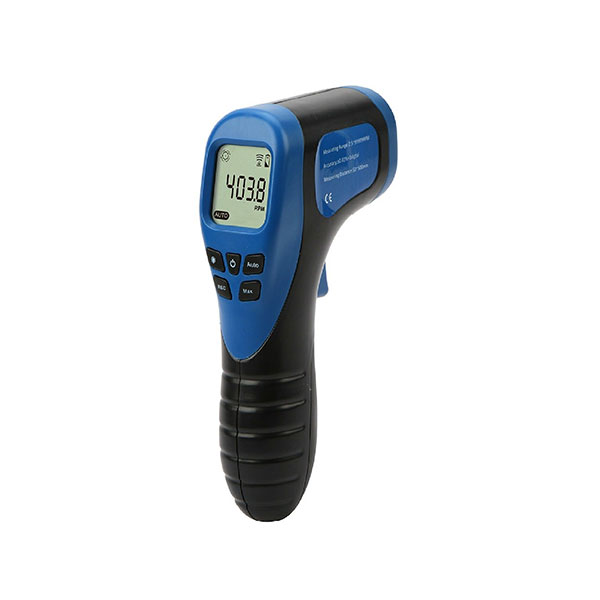The Value of a Tachometer in Checking Engine Rate and Performance in Automotive Applications
In the realm of automobile engineering, the tachometer stands as an essential instrument in the motorist's arsenal, supplying a straight home window right into the internal operations of a car's engine. Past its feature as a simple gauge of changes per minute (RPM), the tachometer functions as a vital device for fanatics and experts alike, using real-time understandings right into engine efficiency and health. Understanding the importance of this gadget goes past surface-level observations, delving right into the complex partnership in between engine rate, power result, and total driving experience. As we explore the diverse duty of the tachometer in vehicle applications, a much deeper admiration for its influence on vehicle characteristics and performance begins to arise.
Value of Keeping An Eye On Engine RPM
Keeping an eye on engine RPM, or revolutions per min, is a crucial facet of automotive maintenance and performance examination. Engine RPM directly correlates with the speed at which the engine's crankshaft rotates, showing exactly how rapidly the engine is running - tachometer. By keeping an eye on RPM, technicians can evaluate the wellness of the engine, find prospective issues, and fine-tune performance. An unusual RPM analysis might signal problems such as engine misfires, malfunctioning ignition system, or problems with the gas shipment system. Regularly high RPM analyses can suggest hostile driving habits or the demand for a greater equipment shift to boost gas performance.
In addition, keeping an eye on engine RPM is important for performance evaluation in racing and high-performance automobiles. Preserving ideal RPM degrees is important for achieving peak power outcome and acceleration. Racers often utilize tachometers to ensure they are running within the optimal RPM array for optimum performance. In summary, checking engine RPM is not only crucial for identifying concerns but additionally for enhancing engine efficiency in various auto applications.

Advantages of Real-Time Data
In automotive applications, real-time information plays an important duty in supplying immediate insights right into the performance and problem of the automobile. By continuously checking various criteria such as engine speed, temperature level, gas consumption, and a lot more, real-time data uses countless advantages that contribute to enhanced performance and security when driving.
One substantial advantage of real-time data is its ability to alert drivers and specialists to any kind of anomalies or concerns immediately. This proactive technique allows fast identification of prospective problems, permitting prompt interventions to avoid further damage or failures. In addition, real-time information assists in efficiency optimization by giving prompt feedback on driving routines and engine effectiveness. Chauffeurs can readjust their habits in real-time based upon this details to achieve far better gas economic climate and extend the lifespan of their car.

In addition, real-time data plays a vital duty in modern-day auto diagnostics, making it possible for professionals to rapidly diagnose and deal with breakdowns. This brings about reduced downtime, reduced upkeep costs, and inevitably, enhanced total vehicle dependability and longevity (tachometer). By taking advantage of the power of real-time information, automotive stakeholders can make enlightened choices that favorably impact both the efficiency and longevity of the automobile
Influence On Gear Shifts
The tachometer plays a vital role in enhancing equipment shifts by providing real-time engine rate information to the motorist. When approaching the redline on the tachometer, it signals the driver to upshift to avoid over-revving the engine and triggering potential damages.
Moreover, the tachometer help in achieving smoother equipment shifts, particularly in manual transmissions. By checking engine speed, vehicle drivers can implement gear shifts at the ideal RPM array, reducing jerking motions and reducing endure the transmission components. This accuracy on duty changes not just enhances driving convenience yet also contributes to fuel performance.
Enhancing Fuel Performance
Offered the critical duty the tachometer plays in maximizing equipment changes for performance and engine health and wellness, it directly adds to optimizing gas effectiveness in automobile applications. By offering real-time comments on engine speed, the tachometer assists drivers in keeping one of the most effective RPM range for fuel economy. When drivers regularly keep an eye on the tachometer and readjust their motoring routines appropriately, they can stay clear of unnecessary fuel consumption triggered by over-revving or lugging the engine.
Moreover, the tachometer aids motorists determine the most fuel-efficient equipment to be in at any type of provided moment, protecting against the engine from working tougher than required. This is specifically important throughout velocity and travelling, where remaining in the ideal gear can see here now dramatically affect fuel effectiveness. Furthermore, the tachometer can signal vehicle drivers to prospective mechanical problems that might be negatively influencing fuel economic situation, such as a sliding clutch or a clogged up air filter. In conclusion, check here the tachometer functions as a useful tool in improving fuel performance by promoting optimal driving routines and recognizing areas for renovation in the vehicle's efficiency.

Making The Most Of Engine Durability
The tachometer's duty in keeping track of engine rate and efficiency contributes in guaranteeing the longevity of vehicle engines. By making use of the tachometer effectively, vehicle drivers can optimize engine longevity via mindful RPM monitoring. Constantly revving an engine expensive can bring about extreme wear and tear on crucial elements, such as the pistons, shutoffs, and bearings. In time, this can result in lowered engine performance and prospective breakdowns. Keeping an eye on the tachometer permits vehicle drivers to stay within the suggested RPM variety for their vehicle, stopping unneeded pressure on the engine and expanding its life expectancy.

Conclusion
To conclude, the tachometer plays a vital duty in checking engine speed and performance in vehicle applications. By supplying real-time information on RPM, it enables efficient equipment changes, improved fuel performance, and maximized engine durability. This tool is crucial for keeping optimal engine performance and guaranteeing the general functionality of an automobile.